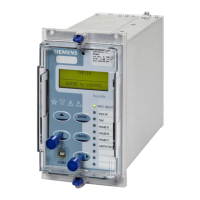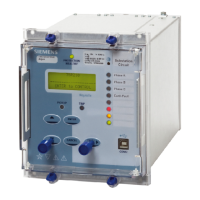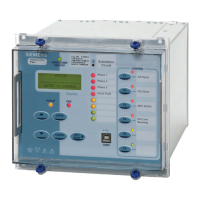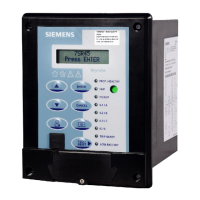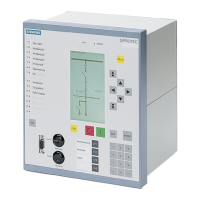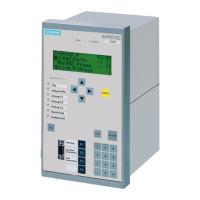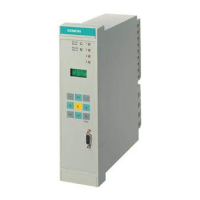7SR18 Commissioning & Maintenance Guide
Unrestricted ©2018 Siemens Protection Devices Limited Page 47
4.3 BROKEN CONDUCTOR (46BC)
46
BC
46
NPS
(x2)
37
(x2)
49
50
BF
I
L1
(I
A
)
81
HBL
2
37
(x2)
49
50
BF
I
L2
(I
B
)
81
HBL
2
37
(x2)
49
50
BF
I
L3
(I
C
)
81
HBL
2
I
4
(I
G
)
74
T/
CCS
NOTE: The use of some
functions are mutually exclusive
50
(x2)
51
(x2)
50N
(x2)
50
(x2)
50
(x2)
51
(x2)
51
(x2)
51N
(x2)
50G
(x2)
51G
(x2)
60
CTS
50
BF
51c
51c
51c
64H
Figure 4.3-1 Broken Conductor
Current Inputs: I
L1
(I
A
), I
L2
(I
B
), I
L3
(I
C
)
Disable: 51N, 46IT, 46DT
Map Pickup LED: 46BC - Self Reset
Broken Conductor uses the ratio of NPS current to PPS current to detect an open circuit conductor. These
quantities can be produced directly from many advanced test sets but with limited equipment the following
approach can be applied.
Apply 3P balanced current with normal phase rotation direction. This current will consist of PPS alone, no NPS or
ZPS.
Increase 1 phase current magnitude in isolation to produce NPS. The single phase unbalance current will contain
equal quantities of ZPS, NPS and PPS. The NPS component will be 1/3 of the unbalance current and the total
PPS component will be value of the original balanced 3P current plus 1/3 of the additional unbalance current. i.e.
as the single phase unbalance current increases, the ratio of NPS to PPS will also increase. The levels of each
sequence component current can be monitored in the Current Meters in Instruments Mode.
Inject 1 A of balanced current. Gradually increase imbalance current, operating level should be as follows:
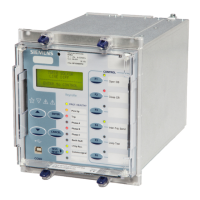
